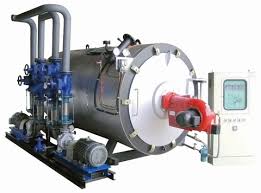
Dec . 06, 2024 03:28 Back to list
low pressure steam price
Understanding Low Pressure Steam Pricing Factors and Trends
Low pressure steam is a critical component in various industries, including manufacturing, food processing, and power generation. As an essential utility, the pricing of low pressure steam can significantly impact operational costs and overall productivity. Understanding the factors influencing the price of low pressure steam is crucial for businesses that rely on it.
What is Low Pressure Steam?
Low pressure steam typically operates at pressures below 15 psi. It is widely used for heating processes, sterilization, and power generation. Compared to high-pressure steam, low pressure steam is easier and safer to handle, making it a popular choice for various applications.
Factors Influencing Low Pressure Steam Prices
1. Production Costs The cost of generating steam is heavily influenced by the prices of fuels and energy sources used in steam generation. Fossil fuels, such as natural gas and coal, have fluctuating prices, which directly impact the cost of steam. Additionally, operational costs related to maintenance and labor play a role in determining the final price.
2. Market Demand The demand for low pressure steam can vary significantly across industries. In times of increased production, such as during seasonal peaks in agriculture or manufacturing, demand for steam rises, potentially driving prices up. Conversely, during economic downturns or periods of reduced activity, demand may decrease, leading to lower prices.
3. Regulatory Factors Compliance with environmental regulations can influence production costs and, subsequently, steam prices. Stricter emissions regulations may require upgrades to steam generation systems, leading to higher operational costs. These costs are often passed on to consumers, impacting the eventual pricing of low pressure steam.
low pressure steam price

4. Technological Advancements Innovations in steam generation technology can also play a critical role in pricing. More efficient and cleaner technologies can reduce fuel consumption and emissions, leading to lower costs for consumers. Investment in such technologies may require a capital outlay upfront but can result in long-term savings.
5. Economic Conditions Broader economic conditions also affect supply and demand dynamics. Economic growth typically leads to increased industrial activity and higher demand for low pressure steam. Conversely, economic downturns can curtail production and lower demand, resulting in reduced prices.
Trends in Low Pressure Steam Pricing
Over recent years, there have been noticeable trends in the pricing of low pressure steam. The shift toward sustainable energy sources is gaining momentum, with many industries exploring biomass, solar, and waste heat recovery systems. Such transitions might initially increase costs due to the investment in new technology but promise to offer lower operational costs over time.
Furthermore, geopolitics play a critical role in energy costs. Instability in oil-producing regions, trade tariffs, and global energy policies can create unpredictability in fuel prices, reflecting on the market price of low pressure steam.
Conclusion
In conclusion, the pricing of low pressure steam is influenced by a multitude of factors, including production costs, market demand, regulatory requirements, technological advancements, and overall economic conditions. As industries continue to evolve and adapt to new energy sources and technologies, understanding these dynamics will be essential for businesses looking to optimize their operations and cost management strategies involving low pressure steam. Keeping an eye on market trends and regulatory changes will enable companies to be better prepared for fluctuations in steam pricing and to make informed decisions in their operational strategies.
-
High-Efficiency Commercial Oil Fired Steam Boiler for Industry
NewsJul.30,2025
-
High-Efficiency Biomass Fired Thermal Oil Boiler Solutions
NewsJul.30,2025
-
High Efficiency Gas Fired Thermal Oil Boiler for Industrial Heating
NewsJul.29,2025
-
High-Efficiency Gas Fired Hot Water Boiler for Sale – Reliable & Affordable
NewsJul.29,2025
-
High Efficiency Biomass Fired Hot Water Boiler for Industrial and Commercial Use
NewsJul.29,2025
-
High-Efficiency Biomass Fired Hot Water Boiler for Industrial Use
NewsJul.28,2025
Related PRODUCTS






















